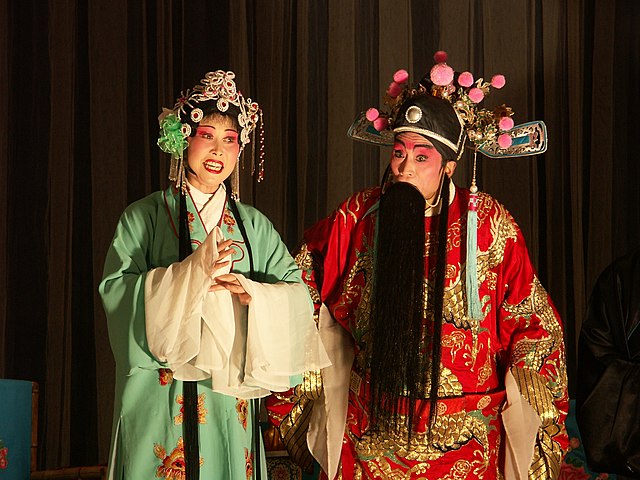Kunqu, also known as Kunju (崑劇), K'un-ch'ü, Kun opera or Kunqu Opera, is one of the oldest extant forms of Chinese opera. It evolved from a music style local to Kunshan, part of the Wu cultural area, and later came to dominate Chinese theater from the 16th to the 18th centuries. It has been listed as one of the Masterpieces of the Oral and Intangible Heritage of Humanity by UNESCO. Wei Liangfu refined the musical style of kunqu, and it gained widespread popularity when Liang Chenyu used the style in his drama Huansha ji. In 2006, it was listed on the first national intangible cultural heritage list. In 2008, it was included in the List of Representative Works of Intangible Cultural Heritage of Humanity. In December 2018, the General Office of the Ministry of Education announced that Peking University is the base for inheriting excellent traditional Chinese culture in Kunqu.
A scene from The Peony Pavilion
Gu Jian, allegedly a transmitter of the Kunshan music in the Yuan dynasty
A Kunqu performer's portrayal of Hu Sanniang
Kunqu performance at the Peking University
Chinese Opera is a form of theatre in China that combines singing, acting, and elaborate costumes. Topics are based on Chinese history, mythology, and literature. Over its historical evolution, it has incorporated various art forms such as music, song and dance, martial arts, acrobatics, costume and make-up art, and literature. It has highly formalized roles, performed by professional actors each trained for specific roles. Exaggerated features and colors make the roles easily identifiable.
A Shao opera performance in Shanghai, China, 2014. This photo shows an acrobatic performer's somersault.
12th century painting by Su Hanchen; a girl waves a peacock feather banner like the one used in Song dynasty dramatical theater to signal an acting leader of troops
Theatre play, Prosperous Suzhou by Xu Yang, 1759
Sichuan opera in Chengdu








